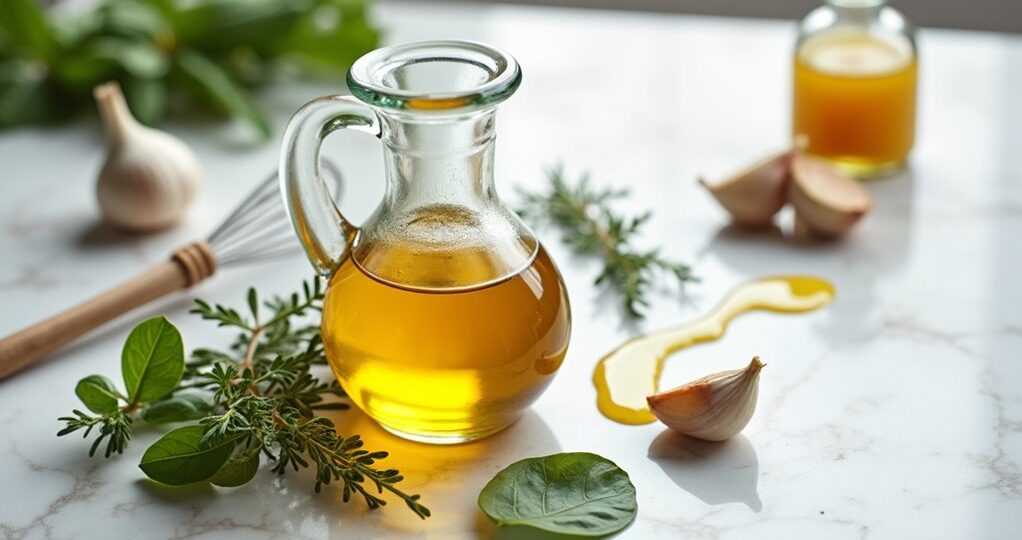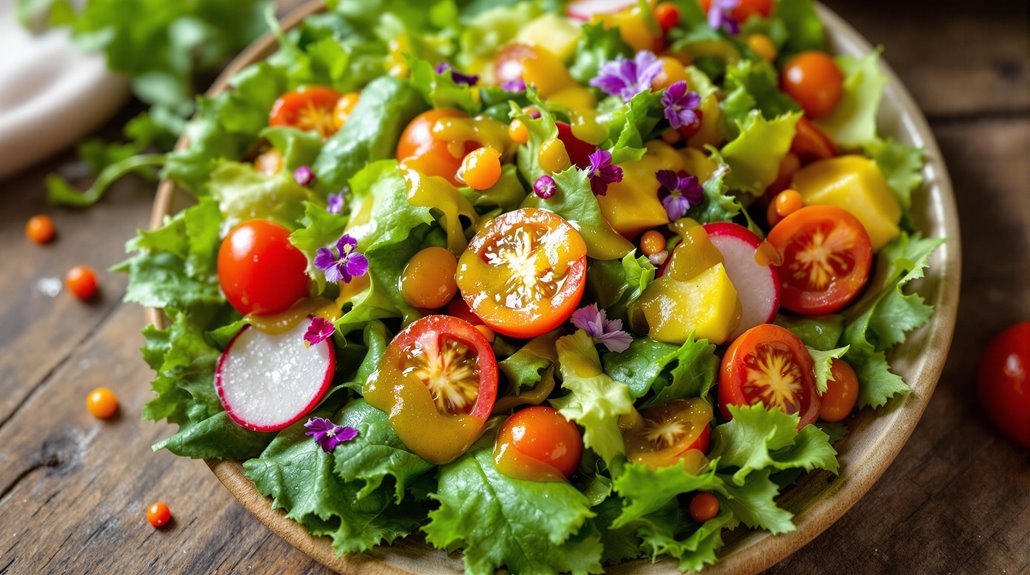Wholesome Dressings for Seasonal Salads
April 10, 2025 | by Nutrition Hub 101

Let's cut through the pretentious salad dressing nonsense you've been fed all these years. You're probably drowning your greens in store-bought bottles of who-knows-what, thinking you're making healthy choices. Well, here's your wake-up call: those supposedly "healthy" dressings are often just sugar bombs in disguise. If you're ready to stop sabotaging your salads and actually taste your vegetables, stick around. The truth about wholesome dressings might just ruffle your lettuce.
History
While ancient humans probably got tired of eating plain leaves like common rabbits, they didn't figure out salad dressing until around 2000 BCE when those clever Babylonians decided oil and vinegar might make their greens less boring.
You can thank the Romans for taking this basic vinaigrette and turning it into a condiment obsession. They'd toss in anything from fish sauce to honey, creating dressings that'd make your modern ranch look positively primitive. By the Middle Ages, you've got Europeans drowning their vegetables in mustard-based concoctions, because apparently nobody could handle eating a raw carrot without some serious flavor enhancement.
Fast forward to the 1900s, when Americans decided to commercialize everything. That's when you got your bottled Russian dressing (which isn't Russian) and Thousand Island (which probably has a thousand preservatives).
Recipe

A classic vinaigrette is the foundation of countless salad dressings, offering a perfect balance of oil and acid that enhances the natural flavors of fresh vegetables. This versatile dressing can be customized with different herbs, mustards, or aromatics to create unique variations that complement any salad combination.
Making your own salad dressing at home not only guarantees you avoid unnecessary preservatives and additives found in store-bought versions but also allows you to control the quality of ingredients and adjust the flavors to your preference. This basic recipe serves as a starting point for creating more complex dressings.
Ingredients:
- 3/4 cup extra virgin olive oil
- 1/4 cup white wine vinegar
- 1 tablespoon Dijon mustard
- 1 small shallot, finely minced
- 1 clove garlic, minced
- 1/2 teaspoon salt
- 1/4 teaspoon black pepper
- 1 teaspoon honey (optional)
Combine the minced shallot and garlic in a bowl with vinegar and let stand for 5 minutes. Add the Dijon mustard and honey, whisking to combine. Slowly drizzle in the olive oil while continuously whisking to create an emulsion. Add salt and pepper, taste, and adjust seasoning as needed. The dressing can be used immediately or stored in an airtight container in the refrigerator.
For best results, remove the dressing from the refrigerator 30 minutes before use, as olive oil solidifies when chilled. If the dressing separates, simply re-whisk or shake the container vigorously. Fresh herbs like basil, tarragon, or thyme can be added for variation, and different vinegars can be substituted to create unique flavor profiles.
Final Thoughts
Let's face it – if you're still buying bottled salad dressings loaded with weird ingredients you can't pronounce, you're doing it wrong. You've now got zero excuses not to make your own kickass dressings at home. They're cheaper, fresher, and won't make your future self curse your present self for poisoning your body with preservatives.
Look, making homemade dressings isn't rocket science. You've got the basic ratios, the essential ingredients, and simple techniques that even a cooking novice can handle. Plus, you'll feel like a culinary boss when your dinner guests beg for your secret sauce recipe. So ditch those store-bought bottles cluttering your fridge door and embrace your inner dressing maestro. Your salads – and your gut – will thank you.
RELATED POSTS
View all


